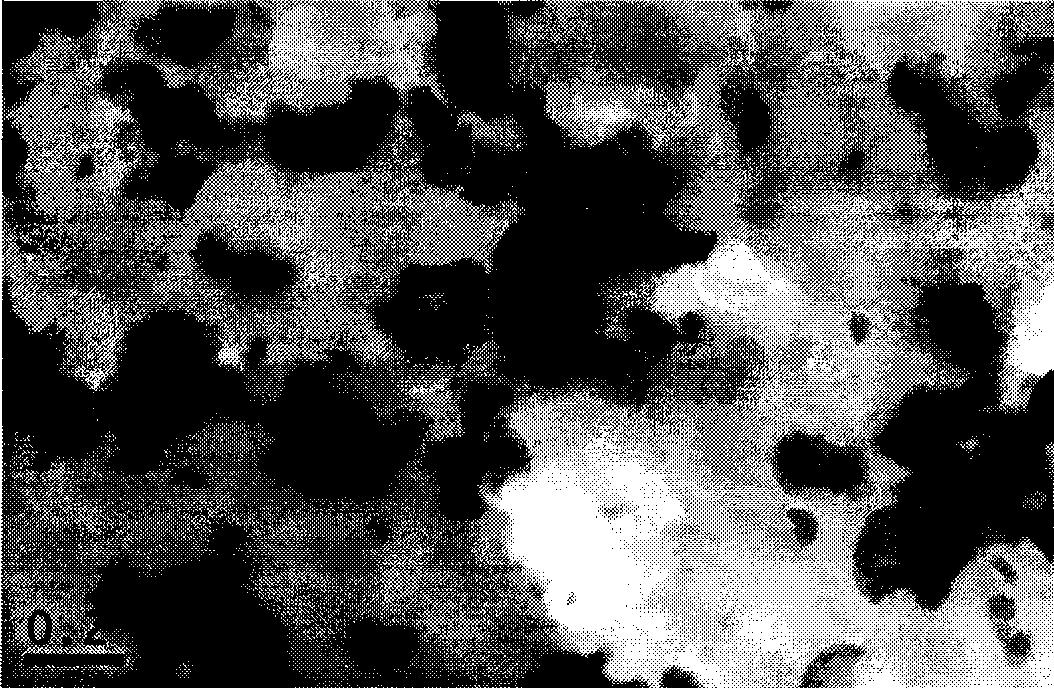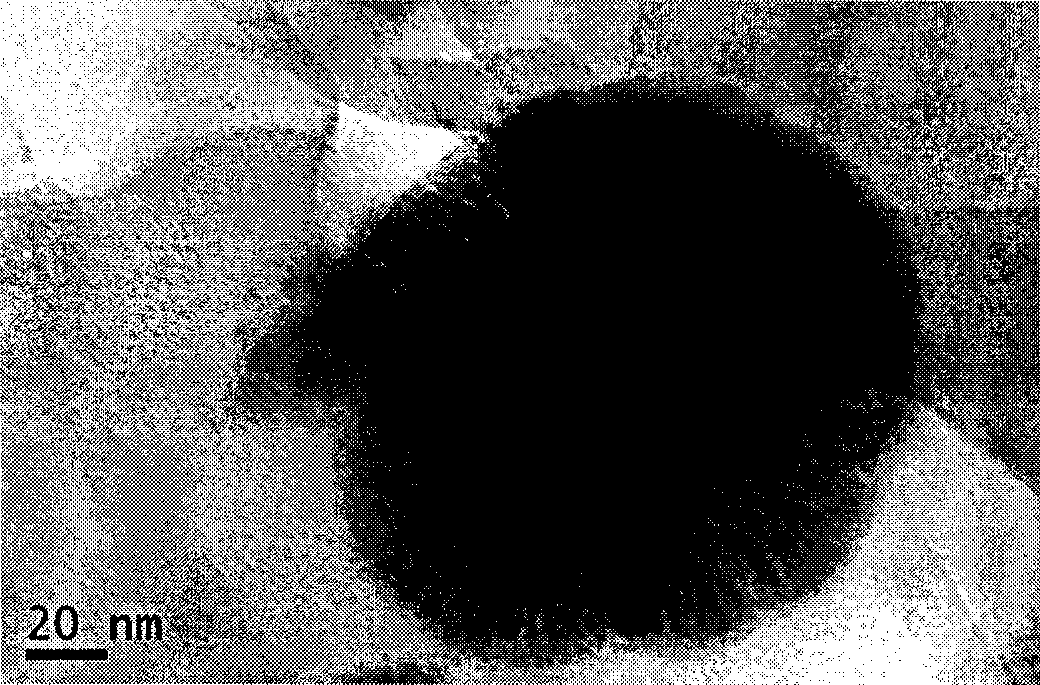Zero-valent iron-carrying nano compound resin for catalyzing and degrading pollutant and preparation method
A nano-composite, catalytic degradation technology, applied in catalyst activation/preparation, chemical instruments and methods, chemical/physical processes, etc., can solve problems such as large head loss
- Summary
- Abstract
- Description
- Claims
- Application Information
AI Technical Summary
Problems solved by technology
Method used
Image
Examples
Embodiment 1
[0027] A zero-valent iron-loaded nanocomposite resin that catalyzes the degradation of pollutants. Its preparation method is as follows: use NDA-88 (containing amino groups, produced by Jiangsu Nanda God Environmental Protection Technology Co., Ltd.) resin as a carrier, soak it in FeCl 3 ·6H 2 In a NaCl saturated solution of O, FeCl in this solution 3 The concentration is 0.2mol / L, the concentration of hydrochloric acid is 1mol / L, and the solid-liquid weight ratio is 1:3. Oscillation, ion exchange 4h, and then filter. NaBH with a concentration of 0.2mol / L 4 or KBH 4 The aqueous solution is mixed with the filtered resin until there are no more bubbles in the solution. After the reaction, at N 2 The resin was filtered under protection, washed with distilled water and ethanol, and vacuum-dried at 30° C. for 24 hours to obtain a nanocomposite resin loaded with pure zero-valent iron. The inner and outer surfaces of the resin are immobilized with pure nanometer zero-valent ir...
Embodiment 2
[0032] A zero-valent iron-loaded nanocomposite resin that catalyzes the degradation of pollutants. The preparation method is as follows: use NDA-99 (containing amino groups, produced by Jiangsu Nanda God Environmental Protection Technology Co., Ltd.) resin as a carrier, soak the resin in FeSO 2 ·7H 2 In a NaCl saturated solution of O, FeSO in this solution 2 The concentration is 0.3mol / L, the concentration of hydrochloric acid is 2mol / L, and the solid-liquid weight ratio is 1:4. Oscillation, ion exchange 8h, and then filter. NaBH with a concentration of 0.5mol / L 4 or KBH 4 The aqueous solution (wherein the volume ratio of ethanol is 5%) is mixed and reacted with the filtered resin until no bubbles emerge from the solution. After the reaction, the resin is filtered, rinsed with distilled water and ethanol, slowly exposed to an oxygen-containing environment for 24 hours, and dried at 40° C. for 10 hours to obtain a zero-valent iron-loaded nanocomposite resin with a core-she...
Embodiment 3
[0037] A zero-valent iron-loaded nanocomposite resin that catalyzes the degradation of pollutants. Its preparation method is: use D-201 (containing quaternary amino, produced by Hangzhou Zhengguang Resin Co., Ltd. and Jiangsu Nanda God Environmental Protection Technology Co., Ltd.) resin as a carrier, soak it in FeCl 3 ·6H 2 In a NaCl saturated solution of O, FeCl in this solution 3 The concentration is 0.4mol / L, the concentration of hydrochloric acid is 3mol / L, and the solid-liquid weight ratio is 1:5. Oscillation, ion exchange 10h, and then filter. NaBH with a concentration of 0.8mol / L 4 or KBH 4 The aqueous solution (wherein the volume ratio of ethanol is 10%) is mixed and reacted with the filtered resin until no bubbles emerge from the solution. After the reaction, at N 2 Filter the resin under protection, rinse with distilled water and ethanol, and then soak in PdCl with a concentration of 0.1mol / L 2 in solution for 5h, then in N 2 The resin was filtered under pro...
PUM
| Property | Measurement | Unit |
|---|---|---|
| Content | aaaaa | aaaaa |
Abstract
Description
Claims
Application Information
 Login to View More
Login to View More - R&D
- Intellectual Property
- Life Sciences
- Materials
- Tech Scout
- Unparalleled Data Quality
- Higher Quality Content
- 60% Fewer Hallucinations
Browse by: Latest US Patents, China's latest patents, Technical Efficacy Thesaurus, Application Domain, Technology Topic, Popular Technical Reports.
© 2025 PatSnap. All rights reserved.Legal|Privacy policy|Modern Slavery Act Transparency Statement|Sitemap|About US| Contact US: help@patsnap.com


